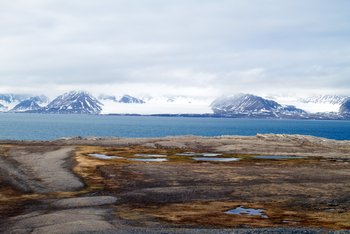Permafrost hydrology plays an important role in global climate simulations, new study shows

Representing the soil hydrology of Arctic and subarctic regions with coarse-resolution land surface models is especially challenging because the hydrology is often determined by small-scale landscape heterogeneity and processes that are spatially and temporarily very confined. As a result, the current generation of models does not even agree on the basic question whether the high latitudes will become wetter or drier in the future.
The availability of liquid water affects almost every aspect of the land-atmosphere interactions and, using simulations with the MPI-ESM model, the researchers showed that the parametrization of the permafrost hydrology has a profound impact on the simulated cloud cover during spring and summer and thus on the planetary energy uptake. They found that the effects on the surface energy and moisture fluxes are so pronounced that uncertainties in the representation of the Arctic hydrological cycle may, indeed, help to explain a large fraction of the inter-model spread in regional surface temperatures and precipitation.
Furthermore, the parameter choices in their simulations determined the direction of the 21st-century trend in the total soil water content. They also affected important cryospheric components of the Earth system, such as the Greenland ice sheet, Arctic sea ice cover and the thickness of subsea permafrost. Interestingly, the effects were not limited to the high northern latitudes but also reached as far to the south as the tropics with implications for droughts in the Amazon forest and vegetation in Northern Africa (Fig 1.).

The scientists commented: “Most researchers are interested in the northern permafrost regions because of the large amount of frozen soil organic matter that will become mobilized as a result of future warming. Here, our investigation shows the potential for another, a hydrological feedback, by which a warming-induced drying of Arctic and subarctic landscapes could accelerate global warming.” Having shown the importance of the permafrost hydrology, Dr. Philipp de Vrese, Dr. Tobias Stacke and Prof. Victor Brovkin are now working on an improved description of the relevant processes within the Q-ARCTIC project, making use of the hierarchical structure of the new JSBACH4 model in combination high-resolution simulations.
The study involved several core groups working on different aspects of cryosphere in the “Carbon Dynamics in the Arctic” project of the CLICCS Cluster of Excellence in Hamburg.
Original publication
de Vrese, P., Georgievski, G., Gonzalez Rouco, J. F., Notz, D., Stacke, T., Steinert, N. J., Wilkenskjeld, S. and Brovkin, V. (2023). Representation of soil hydrology in permafrost regions may explain large part of inter-model spread in simulated Arctic and Subarctic climate. The Cryosphere, 17, 5, 2095–2118, http://doi.org/10.5194/tc-17-2095-2023
Contact
Dr. Philipp de Vrese
Max Planck Institute for Meteorology
philipp.de-vrese@mpimet.mpg.de
